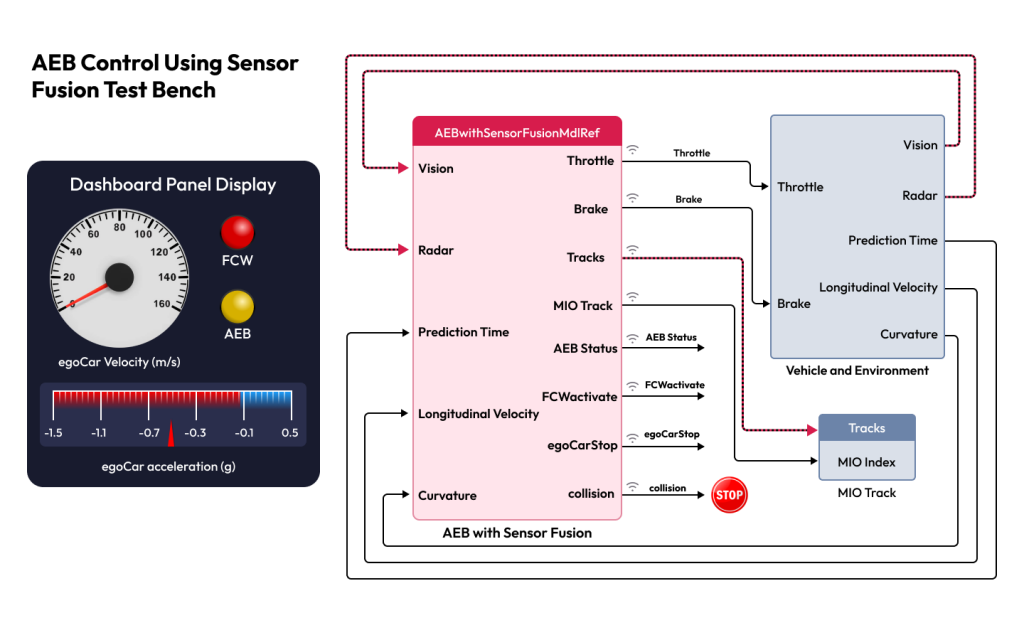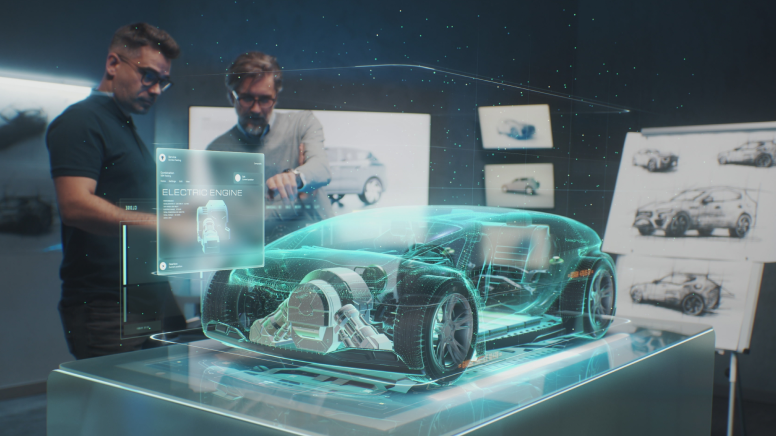Model-Based Design for embedded systems has revolutionized engineering design and software development across industries, such as automotive, aerospace, and consumer electronics. It is a transformative approach that enables teams to design, simulate, and test embedded systems with minimized errors and accelerated development.
However, enterprises can suffer from common pitfalls in Model-Based Design (MBD) implementation, such as overloading models with details, integration issues, communication gaps, inadequate documentation, and system validation issues. This article offers a practical look at simplifying the MBD process and code generation in embedded systems development processes. Additionally, we have highlighted common pitfalls that can derail progress and how to avoid them based on my experiences.
Understanding Model-Based Design process
The Model-Based Design process uses models as primary artefacts throughout the embedded systems development lifecycle—system design, simulation, and testing. These models serve as:
- Visual representations of system behaviour: Helping teams understand and communicate complex designs.
- Requirements validation tools: Ensuring the designs meet specifications early in the embedded systems development lifecycle.
- Early-stage testing method: Allowing for early-stage simulations of complex systems, allowing teams to identify issues before physical implementation.
Simplifying the MBD Process

It is essential to streamline the MBD process to maximize its benefits. Here are key strategies:
- Define clear objectives
Before diving into the modeling process, start with a clear understanding of the project’s goals. Determine what the model needs to achieve—whether for simulation, control algorithm design, or validation. Defining clear objectives upfront helps create precise models aligned with project requirements. For instance, a project focused on developing a Battery Management System (BMS) might prioritize energy efficiency and fault tolerance as primary objectives.
- Utilize modular design
Break down complex systems into smaller, manageable modules to simplify the development and testing process. This modular approach allows easier debugging and integration. The modular design promotes reusability as validated modules can be repurposed across projects, saving time and effort. For example, separating powertrain and user-interface modules in automotive design can streamline both the embedded systems development and testing processes.
- Standardize models
Establish standard modeling practices and templates within your organization. This will help ensure consistency and facilitate your team in streamlined collaboration and sharing of insights.
- Focus on key requirements
Avoid overloading models with excessive details. Prioritize the system’s critical requirements and develop the detailed sub-models separately. This is essential to aligning the project with user needs while maintaining model simplicity.
- Incorporate real-time simulation
Leverage tools that enable real-time simulation and testing under dynamic conditions. For instance, in BMS development, real-time simulation allows teams to test battery algorithms under various conditions, ensuring performance before deployment. This helps organizations reduce reliance on costly physical prototypes.
- Iterative development
Embrace an iterative approach to refining models continuously. Regularly review and update models based on testing feedback. This approach is crucial for adapting to changing requirements and ensuring the model remains relevant for embedded systems development.
- Encourage cross-disciplinary collaboration
Involve stakeholders from diverse disciplines—such as engineers, designers, and testers—early in the modeling phase. Diverse perspectives can help identify potential issues, avoid misinterpretations, and improve model accuracy.
Common pitfalls to avoid in the MBD process
While the Model-Based Design process offers significant advantages, it is not immune to challenges. Here are common pitfalls and strategies to avoid them:
- Overloading models with details
It is tempting to capture every detail, but overly complex models can obscure critical insights, become computationally expensive, and be challenging to manage. Teams should focus on the essential features that impact performance and safety while aligning with the project’s goals.
- Neglecting integration testing
Integration between various components is crucial in real-time systems, such as Battery Management Systems (BMS). Inadequate integration testing can lead to system incompatibilities and unexpected failures. Therefore, you must ensure that models are tested in isolation and as part of the overall system. This helps catch integration issues early.
- Neglecting verification and validation
The verification process ensures that models are built correctly, while validation confirms that they meet the project’s intended requirements. Skipping Verification and Validation (V&V) steps can result in flawed designs. Teams should ensure that models are regularly verified and validated against requirements.
- Inadequate documentation
Comprehensive documentation of all models is vital for future reference and team onboarding. Throughout the project, always maintain precise records of design decisions, assumptions, and changes.
- Skipping model validation
Validate models regularly against real-world data and requirements. This step is particularly important in safety-critical systems like BMS, where errors can have serious consequences.
- Lack of team training
MBD tools and methodologies can be complex. Invest in training sessions to ensure that all team members are comfortable using these tools and understand the underlying principles of the MBD process.
Wrapping up
When implemented thoughtfully, Model-Based Design for embedded systems can significantly enhance the efficiency and effectiveness of engineering projects. By simplifying the MBD approach and being mindful of common pitfalls, organizations can harness the full potential of the MBD process—navigate complexity, reduce time to market, reduce cost, and improve quality.
At Robosoft, we specialize in core engineering simulation services that empower you to optimize the simulation-driven design for faster prototyping, accelerating your journey to optimal design possibilities. We have partnered with leading global companies in the Automotive and technology space, providing Core Engineering and Simulation services by leveraging industry-leading software tools tailored to align with current market standards.






